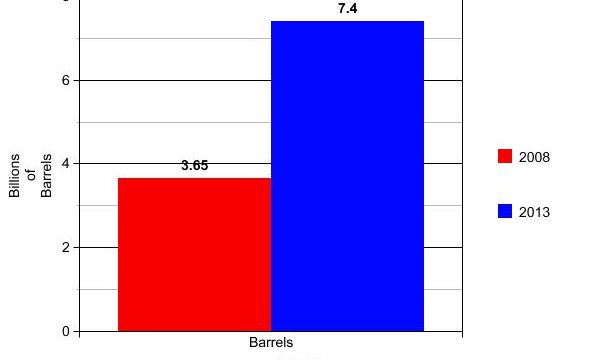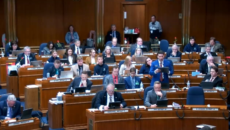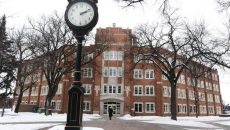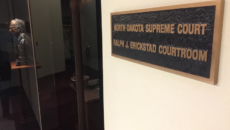USGS Estimate Of Recoverable Oil In North Dakota Increases 102%

This breaking now from Senator John Hoeven’s office. After requesting another survey by the United States Geological Service, that agency has nearly doubled their estimate of technically recoverable oil in North Dakota.
The USGS has gone from an estimate of 3.65 billion recoverable barrels to 7.4 billion. That’s a 102% increase.

Sadly, this great news will be perceived by many in the state as reason to continue resisting reform to the state’s sky-high and needlessly complicated oil tax regime. They’ll see it as a projection that the goose will keep laying the golden eggs no matter what.
But as well all know, the energy markets are volatile. The state would be better served, long term, by a lower and simpler oil tax.
Here’s Senator Hoeven’s press release:
BISMARCK, N.D. – Senator John Hoeven today announced that the U.S. Geological Survey (USGS) has determined that there are approximately 7.4 billion barrels of technically recoverable oil, more than twice the previous estimate in the Williston Basin. The report also estimates there to be 0.7 trillion cubic feet of natural gas. It’s the largest unconventional oil resource the USGS has ever assessed and it includes the Three Forks Formation. The last USGS study, released in April 2008, identified 3.65 billion recoverable barrels of oil in the Bakken formation with far more oil than that in place.
“This is clearly great news for North Dakota and great news for the nation,” Hoeven said. “It will further serve to enhance our state’s role as an energy powerhouse for the nation. More than two years ago I persuaded former Interior Secretary Ken Salazar to initiate a new USGS study of the Williston Basin to stimulate more private-sector investment in infrastructure like housing, hotels, retail stores and other services to meet the needs of a rapidly growing western North Dakota. This new USGS study further confirms and reinforces the fact that the Williston Basin is a sustainable, long-term play warranting strong private-sector investment for decades into the future.”
In May 2011 U.S. Interior Department Secretary Ken Salazar agreed to Senator Hoeven’s request to update estimates of recoverable oil reserves in the Williston Basin in order to generate a long-term outlook for production potential and infrastructure investment in the region. The USGS, which is administered by the Interior Department, began the study in October 2011 and worked for about 19 months to complete it.
The request to Salazar was prompted by reports the senator had received earlier from companies operating in the Williston Basin. The companies said they believed there to be significantly more recoverable reserves in the area than the 2008 report reflected. In order to warrant a revised study the USGS needed current data from the oil companies regarding production curves, recovery rates, new technologies they are employing and any new geological analyses they have available.
Seven companies producing oil in the state provided data to the USGS about the latest technologies and recovery rates in the Williston Basin, including XTO Energy; Continental Oil; Cornerstone Energy Resources; Marathon Oil; United Energy Corporation; Sinclair Oil Corporation; and Whiting Oil and Gas. The North Dakota Division of Mineral Resources also shared geological data with the USGS.
Hoeven had initially contacted Brenda Pierce, Coordinator for the Energy Resources Program at the USGS to do the new study early in 2011, and followed up with Secretary Salazar at a March 2011 hearing of the U.S. Senate Energy and Natural Resources Committee, on which Hoeven serves, as well as at a meeting in the senator’s Washington, D.C. office.
Following the hearing, the Senator organized a meeting of the USGS; city, state and county officials; and oil industry leaders in Bismarck to bring industry, community and agency leaders together. Pierce and other USGS geologists and engineers were on hand at the Bismarck meeting to hear evidence from oil producers regarding the need, value and timeliness of a new, updated study.







